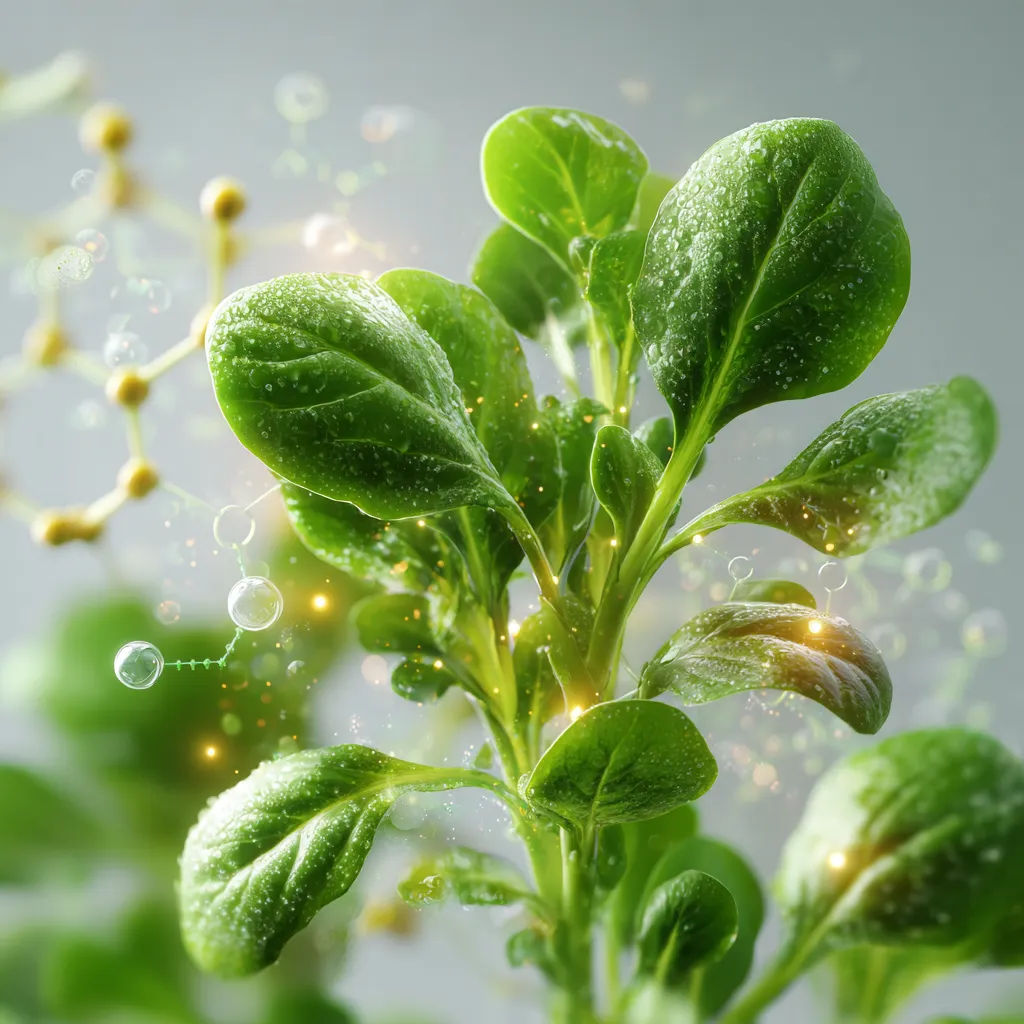
The Epigenetic Power of Watercress: A Forgotten Fertility Enhancer Hidden in Cruciferous Pathways
The Epigenetic Power of Watercress: A Forgotten Fertility Enhancer Hidden in Cruciferous Pathways
(How a simple leafy plant switches on genes your ovaries desperately need)
Some of the most powerful fertility enhancers don’t come from supplements, injections, or advanced medical protocols.
They come from plants.
But not always the glamorous ones.
Today, we’re looking at something so ordinary that most people overlook it in the supermarket:
Watercress—one of the oldest medicinal greens on Earth.
And yet behind its unassuming appearance lies a biochemical power few talk about:
Watercress can epigenetically activate key detox, inflammation, estrogen-metabolism, and mitochondrial genes that directly influence egg quality and endometrial receptivity.
This isn’t nutrition dogma.
This is gene expression science.
Let’s break it open.
Watercress: The Most Underestimated Cruciferous Plant
When people think of cruciferous fertility foods, they jump to:
broccoli
kale
cabbage
cauliflower
But the most potent crucifer for epigenetic modulation is actually one of the least consumed:
Nasturtium officinale – watercress.
Watercress contains unusually high concentrations of:
PEITC (phenethyl isothiocyanate) – a master epigenetic switch
sulforaphane-like glucosinolates
quercetin
beta-carotene
chlorophyll
nitrates that improve microcirculation in reproductive organs
PEITC is where the magic happens.
The Epigenetic Mechanisms: What Watercress Does to Your Fertility Genes
The fertility benefits of watercress come from its profound influence on gene regulation—specifically through:
DNA methylation
histone acetylation
HDAC inhibition
Nrf2 activation
oxidative stress gene upregulation
Let’s look at the big four areas.
1. Watercress Reduces Inflammation in the Endometrium
Chronic, low-grade inflammation silently disrupts:
implantation
ovarian aging
follicle development
progesterone sensitivity
The PEITC molecule in watercress is shown to:
⭐ Downregulate NF-κB (inflammatory master switch)
⭐ Reduce COX-2 expression
⭐ Decrease IL-6 and TNF-α levels
This matters because the receptive endometrium requires a very specific inflammatory pattern—too much and implantation fails.
Watercress nudges your genes toward balance.
2. Watercress Improves Estrogen Metabolism Epigenetically
Poor estrogen clearance is one of the most common hidden fertility blockages.
It leads to:
irregular cycles
PMS
estrogen dominance
poor-quality ovulation
low progesterone
endometrial overgrowth
impaired implantation
Cruciferous plants are famous for helping with estrogen metabolism, but watercress is especially potent because PEITC:
⭐ Switches ON phase II liver detox genes (GST, NQO1)
⭐ Acts as a gentle HDAC inhibitor to normalize estrogen receptor signaling
⭐ Increases methylation activity needed for estrogen clearance
This creates a hormonal environment that supports healthy ovulation and a receptive luteal phase.
3. Watercress Activates the Nrf2 Pathway—A Fertility Superpower
Nrf2 is the “cellular defense switch”—and one of the strongest predictors of reproductive aging.
When Nrf2 is active:
mitochondrial function improves
oxidative stress drops
ovarian reserve stabilizes
DNA damage in eggs decreases
Watercress triggers Nrf2 even more strongly than broccoli in some studies.
Activated Nrf2 then turns on genes such as:
SOD2
Catalase
Glutathione peroxidase
Heme oxygenase-1
These are egg-protecting, aging-slowing, implantation-supporting genes.
A leafy green doing genetic-level rescue work.
4. Watercress Increases Blood Flow to Reproductive Organs
Watercress naturally contains bioavailable nitrates that convert into:
→ nitric oxide
→ vasodilation
→ improved uterine & ovarian blood flow
→ better oxygen delivery
→ healthier follicle development
→ stronger luteal support
Better blood flow = better fertility.
Every organ that needs to regenerate monthly needs oxygen.
What No One Talks About: Its Unique SIRT1 Activation
SIRT1 is a longevity enzyme crucial for:
ovarian aging
DNA repair
mitochondrial function in oocytes
cortisol regulation
metabolic resilience
Watercress upregulates SIRT1 epigenetically—placing it in the same category as fasting, exercise, spermidine, and resveratrol.
Except you can eat it.
And it tastes fresh and peppery.
How to Use Watercress for Fertility (Practical Guide)
When to use it:
Daily, but especially beneficial:
during the follicular phase
before ovulation
in preconception months
during luteal inflammation episodes
after stress periods
alongside detox cycles
How much:
1–2 large handfuls daily as:
salad
smoothie
watercress pesto
added to eggs
stirred into soups at the end
fresh on top of meals
Avoid cooking it heavily
because PEITC is best preserved raw or lightly wilted.
Why Watercress Is “The Forgotten Fertility Food”
It’s not trendy.
It’s not packaged.
It’s not marketed.
It’s not sexy.
But ancient cultures used it extensively for:
hormonal balance
postpartum healing
liver repair
detoxification
fertility optimization
Modern epigenetic science is finally explaining why.
This green is small, but its molecular impact is enormous.
Watercress is not a salad.
It’s an epigenetic signal.
